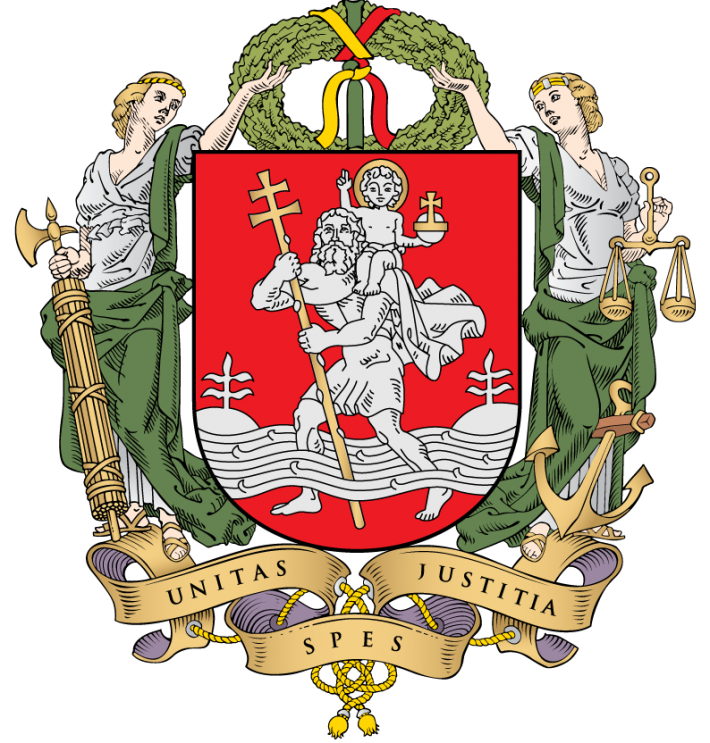Views: 145
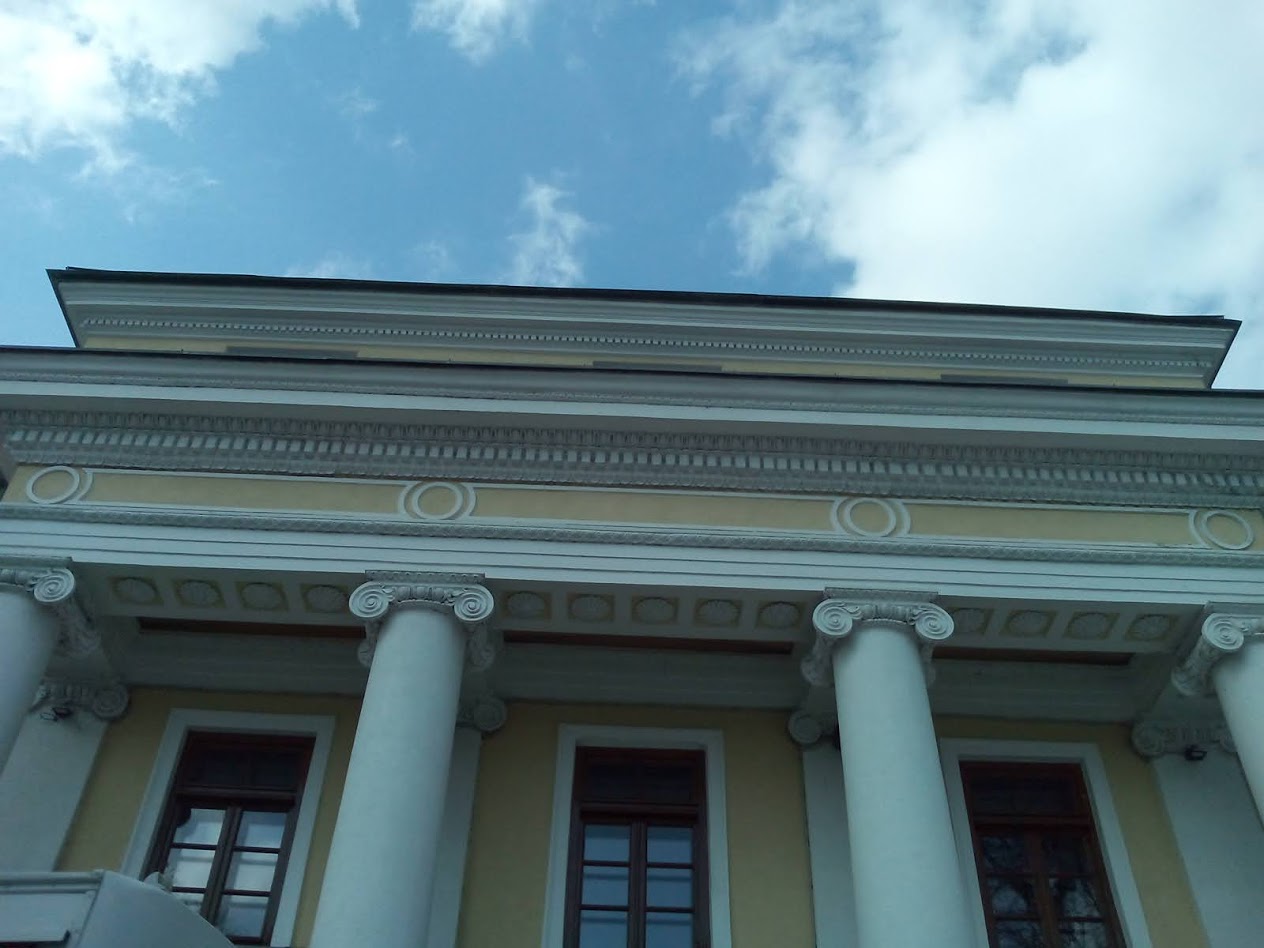 In 1780, Vilnius Bishop Ignacy Massalski settled in Verkiai. He commissioned Lithuanian architect Laurynas Gucevičius to reconstruct an earlier palace. The general plan and maintenance buildings were designed by Lithuanian architect Martin Knackfuss
In 1780, Vilnius Bishop Ignacy Massalski settled in Verkiai. He commissioned Lithuanian architect Laurynas Gucevičius to reconstruct an earlier palace. The general plan and maintenance buildings were designed by Lithuanian architect Martin Knackfuss
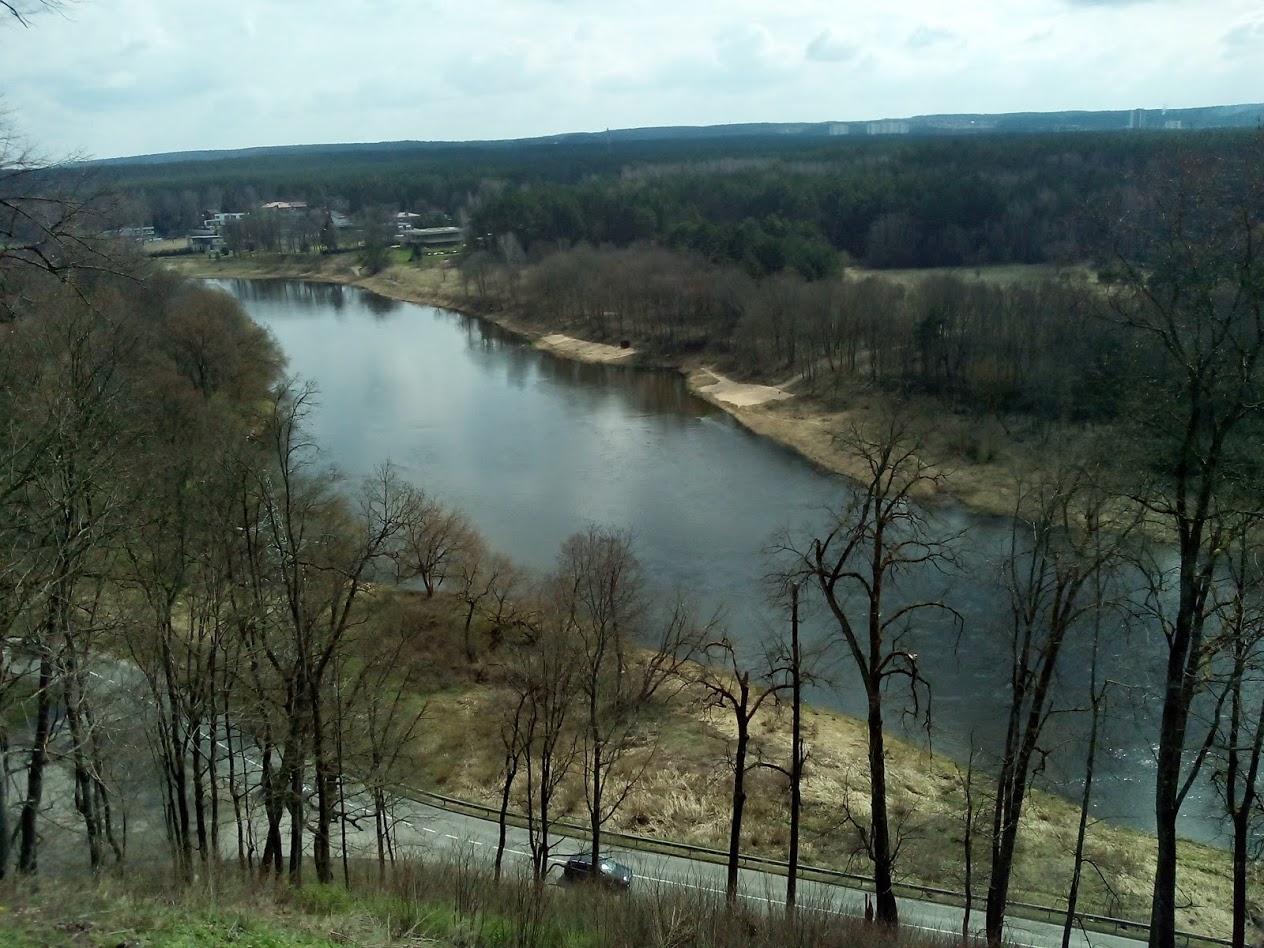 The ensemble encompasses the park of 36 ha. Situated on two terraces, the park consisted of two parts – the upper and the great park. A view of Vilnius and the Neris River is exposed from a steep slope
The ensemble encompasses the park of 36 ha. Situated on two terraces, the park consisted of two parts – the upper and the great park. A view of Vilnius and the Neris River is exposed from a steep slope
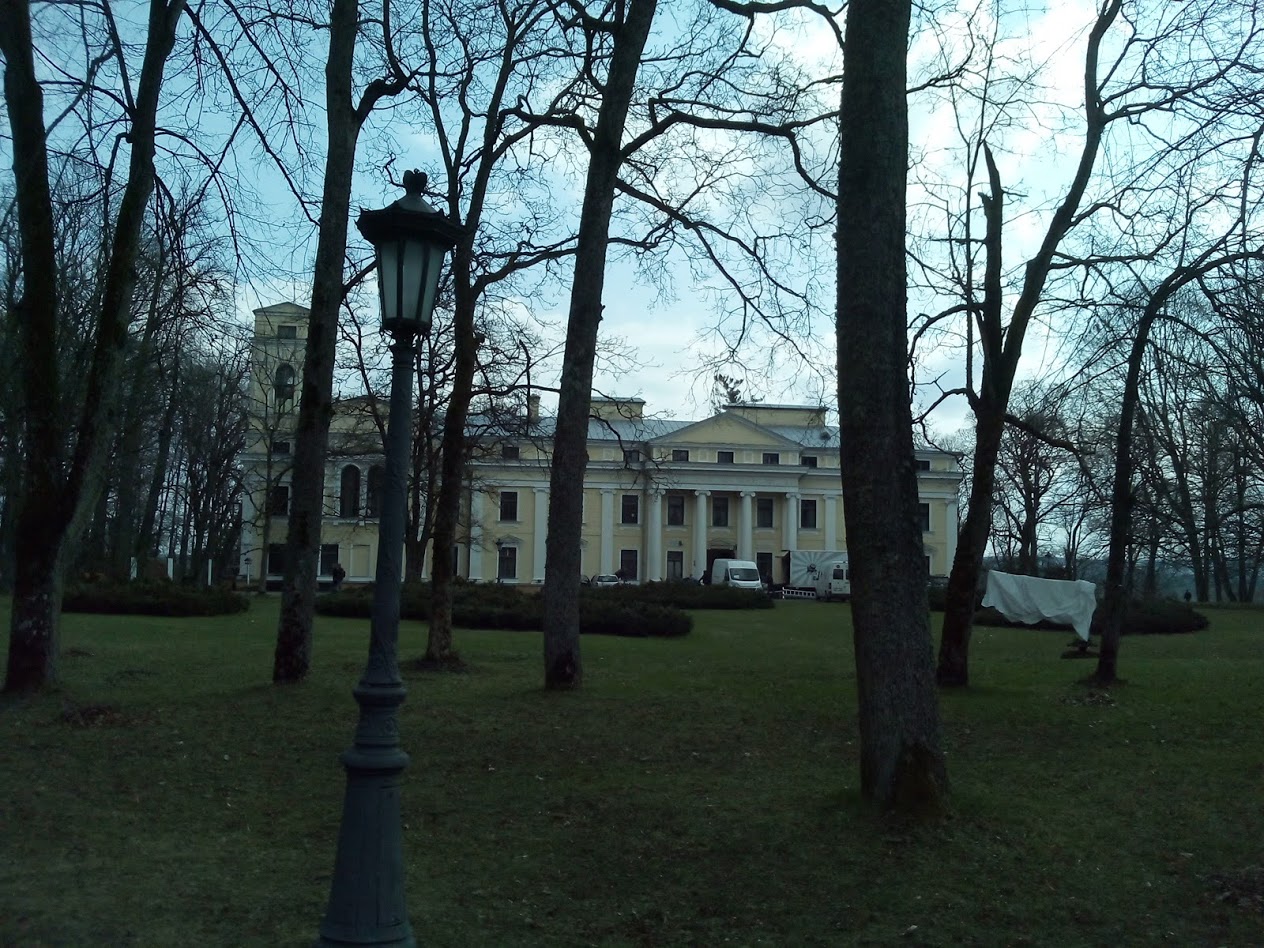 Since 1960 the ensemble belongs to the Lithuanian Academy of Science and is gradually renovated
Since 1960 the ensemble belongs to the Lithuanian Academy of Science and is gradually renovated
All photos are copyrighted by Vladislav B. Sotirovic
© Vladislav B. Sotirovic 2021
RELATED POSTS
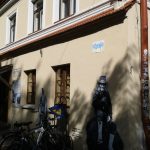
The Galera Gallery in the Užupis Art Incubator also operates there, where exhibitions of various kinds of art are organizedGalera of Užupis is an Alternative art gallery. That is a place similar to the former Christiana district in Copenhagen in DenmarkThe Užupis district and its Art Incubator are separated from the Old Town in Vilnius on three sides by the River Vilnia, and by a high hill on the fourth sideAll photos are copyrighted by Vladislav B. Sotirovic© Vladislav B. Sotirovic 2020
Continue Reading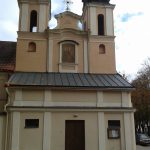
According to legend, the monastery and wooden church were built circa 1332 in the burial spot of the Franciscan monks that had been martyred by Lithuanian pagansThe building complex is formed in the mid-18th century. Today, the church possess six Late Baroque-style altars, with the main altar having a picture of the Holy Virgin Mary that is considered to be miraculous. A copy of the picture is painted on the façade in 1742 The monument to famous Lithuanian neo-Classicist architect Laurinas Gucevičius, the founder of Vilnius neo-Classicism, is erected in 1994 in the square in front of the church. All photos are copyrighted by Vladislav B. Sotirovic© Vladislav B. Sotirovic 2020
Continue Reading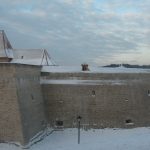
The Bastion is comprised of a tower, cannon room and 48 m. the long corridor connecting it with the towerThe walls and moats of the Bastion were excavated in 1965-1970, and the canon room was renovated in 1985-1986 The entire Bastion is converted into a museum, and since 1987 it houses an exhibition of defensive fortifications and weaponryAll photos are copyrighted by Vladislav B. Sotirovic© Vladislav B. Sotirovic 2019
Continue Reading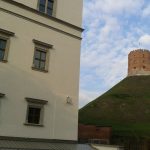
Upper Caste's Gediminas Tower (14th century) with the Royal Palace of Lithuania (the Palace of Grand Dukes of Lithuania, 16th century). Today, it houses a museum and an observation deck from which it can be seen a beautiful panorama of the city from the 75 m. high perchThe museum exposition features plans of castlereconstruction as well as armamentsGediminas Tower with the Lithuanian tricolor flag became a symbol of Lithuania. Gediminas Tower is a Western tower of the Higher Castle of Vilnius with an octagonal plan, stone foundations, and mainly brick walls built in the Gothic mannerAll photos are copyrighted by Vladislav B. Sotirovic© Vladislav B. Sotirovic 2018
Continue Reading
Trakų St. finishes where it meets Pylimo St, which runs along the course of the old city wall. There used to be a gate here, which was pulled down together with the wall at the very beginning of the 19th century. In the niche of the Umiastowski estate (Trakų St. 2) there is a Statue of "The City Guard" (1973) In Trakų Street, there is the Church of Our Lady of the Assumption that was founded here by the noble Goštautas family in 1387, the same year as Lithuania became converted to Christianity. However, it is believed that the church with the monastery existed even earlierOne of courtyards of the buildings in Trakų StreetAll photos are copyrighted by Vladislav B. Sotirovic© Vladislav B. Sotirovic 2020
Continue Reading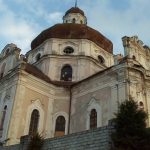
The Church of the Heart of Jesus is a significant monument of Baroque (finished in 1756). It is the only Roman Catholic church in Lithuania to be built along a Greek Orthodox cross designThe church has a large octagonal cupola (dome) and a very reach the elegant exterior. The interior is no less magnificent, although it was severely damaged during the Soviet timeAfter 1945, a prison was established in the church and convent buildings. The church interior and the plan of the convent buildings were transformed. After 1990, the sacral buildings are returned to their former ownersAll photos are copyrighted by Vladislav B. Sotirovic© Vladislav B. Sotirovic 2020
Continue Reading
Mindaugas Bridge is constructed in 2003. It has the name of the only Lithuanian King crowned on July 6th, 1253On the foothill on the left riverside of Neris, there is a Renaissance building of Old Arsenal followed by the buildings of House of the Castle Keeper and New Arsenal On the right riverside of Neris, a new business center of Vilnius is growing during the last two decadesAll photos are copyrighted by Vladislav B. Sotirovic© Vladislav B. Sotirovic 2019
Continue Reading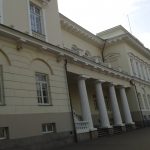
The main façade of the Presidential Palace (Prezidentura) in Vilnius at Simonas Daukantas SquareThe presidential coat-of-arms is adorning the entrance to the President's Chancellery on University StreetThe Inner Courtyard of the Presidential Palace - the palace of the President of the Republic of Lithuania since 1997All photos are copyrighted by Vladislav B. Sotirovic© Vladislav B. Sotirovic 2018
Continue Reading
The life and work of Dr. Jurgis and Marija Šlapelis reflects the life of the region of Vilnius from the second half of the 19th century to 1940. Both of them have been cultural figures in Lithuania. Marija was actress. They published Lithuanian books that were banned at that timeDr. Jurgis and Marija Šlapelis owned the only Lithuanian language bookstore in Vilnius during 1906-1949. The Šlapelis family bought the house in 1926. Before, it was a goldsmith's workshops, and later housed a small holet called the Hotel de Philadelphie, and a wine shop The building is an example of the 17-th century architecture. Dr. Jurgis died in 1941, and Marija in 1977 at the age of 97. After WWII, the house was nationalised, and, therefore, Marija Šlapelis was forced to live in two small rooms upstairs, with the only access to them through another person's quarters. Marija stipulated in her ...
Continue Reading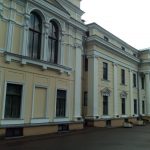
Of the two wings, only the east one is open to the public. It is used as a venue for art-exhibitions, usually for work by contemporary artistsThe east wing was given a tower in the mid-19th century. As viewing a show, visitors can admire its lavishly decorated rooms, with their elaborate woodwork and intricately painted walls and ceilingsThe most magnificent building is the eastern maintenance building, in which the interiors of the second half of the 18th century have been restoredAll photos are copyrighted by Vladislav B. Sotirovic© Vladislav B. Sotirovic 2021
Continue Reading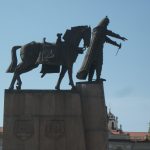
Grand Duke Gediminas is considered as the founder of the city of Vilnius. The monument is located in front of the Royal Palace and Cathedral Basilica in the very downtown of VilniusGediminas was a diplomatic politician, creating ties with the Roman Pope and other European rulers. He created favourable conditions for merchants and guildsmen to come to the city. Gediminas was a Grand Duke of the Grand Duchy of Lithuania from 1316 to 1341During the time of Gediminas, people of different ethnicities and confessions began to live in Vilnius. He is the founder of the Gediminian-Jagelonian ruling dynasty of Lithuania and later of Poland as well (till 1572)All photos are copyrighted by Vladislav B. Sotirovic© Vladislav B. Sotirovic 2018
Continue Reading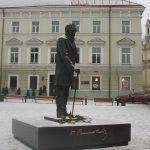
A monument to dr. Jonas Basanavičius in Vilnius in front of the building of the Lithuanian National PhilharmonicDr. Jonas Basanavičius chaired the session of Lithuanian Council that adopted the Act of Independence of Lithuania on 1918-02-16. He was the first to sign the Act of the Proclamation of the Lithuanian IndependenceBalancing between Lithuanian and Polish interests, he refused to participate in the opening of the Polish Stefan Batory University (today Vilnius University)All photos are copyrighted by Vladislav B. Sotirovic© Vladislav B. Sotirovic 2020
Continue Reading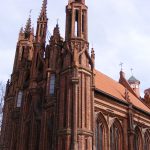
Church of St. Anne (left) and Bernardine Church (right). The church of St. Anne is a unique monument of red firebrick Gothic architecture in LithuaniaSt. Anne Church, designed in 1495-1500 by Benedikt Rejt, built up at the turn of the 15th century, and renovated in 1902-1909. 35 different kinds of brick were used help in creating the church. The façade was reinforced in 1960-1970St. Anne Church - a church which French Emperor Napoleon Bonaparte wanted to put on his palm and carry it over to Paris. The Church of St. Anne is symmetrical, marked by graceful, pointed forms that continue upwardAll photos are copyrighted by Vladislav B. Sotirovic© Vladislav B. Sotirovic 2018
Continue Reading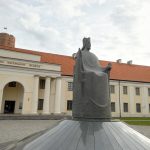
Originally, the Vilnius Lower Castle's jurisdictional court and administration was housed in this building during the 17th and 18th centuries. In the 18th century it was reconstructed into a weapons store-house and militarry baracks. Today, the museum holds the most important archaeological, historical, and ethnic cultural collections of Lithuania that cover Lithuania's history from the Stone Age to the present-day. In front of the building is a monument to King Mindaugas In 2003, a monument to King Mindaugas was erected in the square in front of the building of New Arsenal (today Lithuanian National Museum)In the 19th century, an entrance in the Classical style was biultAll photos are copyrighted by Vladislav B. Sotirovic© Vladislav B. Sotirovic 2018
Continue Reading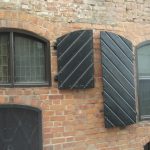
End of Stiklų St. on the intersection with Dominikonų St. and Šv. Ignoto St. in the Old Town in VilniusIn Stiklų St. No. 4 stands a typical building with a so-called Courtyard of the Printing House. Its history goes back to the 15th century. In the 16th century it held the Mamonichi printing house. A Gothic building in the courtyard with the exterior and fragments of the interior was reconstructed in 1974. In front of it a sculpture of "The Chronicler" is erected in 1973Wall (right) of the former Russian Orthodox church in Stiklų St. No. 17All photos are copyrighted by Vladislav B. Sotirovic© Vladislav B. Sotirovic 2020
Continue Reading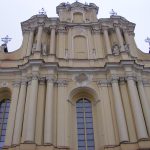
The church received its current form in 1738-1749 after fires in the cityThe church was rebuilted by Vilnius Baroque architect J. K. Glaubitz in the ornate Late Baroque style, and installed 24 altars insite The church bell tower received its current shape in 1737. The bell tower is 68 m tall. It is the tallest building in Vilnius Old TownAll photos are copyrighted by Vladislav B. Sotirovic© Vladislav B. Sotirovic 2018
Continue Reading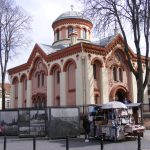
The Russian Orthodox Church of St. Parasceve (or Piatnickaya Church) is located in the centre of Vilnius' Old Town where a Russian Orthodox Church stood since the times of the Lithuanian Grand Duke Algirdas in the mid-14th centurySt. Parasceve Russian Orthodox Church is the oldest surviving Russian Orthodox Church in Lithuania located in the former Russian quarter of the Old TownThe church was reconstructed in the mid-19th century by the famous Russian architect N. ChaginAll photos are copyrighted by Vladislav B. Sotirovic© Vladislav B. Sotirovic 2021
Continue Reading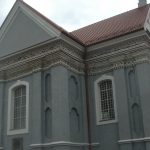
St. Lazarus' almshouse operated in this church, plague and famine victims were buried there. In 1715, the church and the monastery were given to the brethren of St. Rochus who tended to sick people, and in 1752 - to the sisters of MaryIn a cemetery at the church many outstanding people were buried, among others architect Laurynas Stuoka-Gucevičius. A memorial plaque to him is set up on the south façade of the church. However, later the cemetery was turned into a storage site of construction materialsThe church was severely damaged during a fire in 1794. The church was reconstructed and slightly transformed in 1801-1806. In 1864, the convent was closed down, and the buildings converted into a prisonAll photos are copyrighted by Vladislav B. Sotirovic© Vladislav B. Sotirovic 2020
Continue Reading
Šiltadaržio St. is ending at Bernardinų St.Art Printing House Culture Center with the Theater in the streetIn the streeet, there is a Toy Museum and other cultural atractionsAll photos are copyrighted by Vladislav B. Sotirovic© Vladislav B. Sotirovic 2020
Continue Reading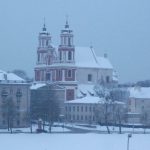
The present church was built in the late 17th century, after its predecessor was burnt down in the 1655 during the war with Russia. The church was completed only in the middle of the 18th century The nave is 24 metres high, making it the tallest in Vilnius; and its length is the same, with accounts for its concentrated appearance when viewed from the sideIn the north tower is a particularly ornate chapel, dedicated to the Dominican St. Hyacinth, with frescoes depicting scenes from his life. The fresco above the entrance depicts the Virgin Mary and Angels. The church was returned to the Dominicans in 1993All photos are copyrighted by Vladislav B. Sotirovic© Vladislav B. Sotirovic 2018
Continue ReadingUžupis Art Incubator (2)
Church of the Holy Cross & former Hospitaller Monastery
The Bastion of the Vilnius Defensive Wall (I)
Gediminas Tower
Trakų Street in Vilnius
Church of the Heart of Jesus and the Convent of the Visitationists in Vilnius
Vilnius Panorama of the Neris River
Presidential Palace
The Šlapelis House Museum
The Verkiai Palace
Monument to Lithuanian Grand Duke Gediminas
Jonas Basanavičius Monument in Vilnius
Church of St. Anne
Lithuanian National Museum (New Arsenal) and a Monument to King Mindaugas
Stiklų St. in the Old Town in Vilnius
St. Johns’ Church
The Church of St. Parasceve
Church of St. Stephen
Šiltadaržio St. in Vilnius
Church of St. Jacob and Philip (2)



